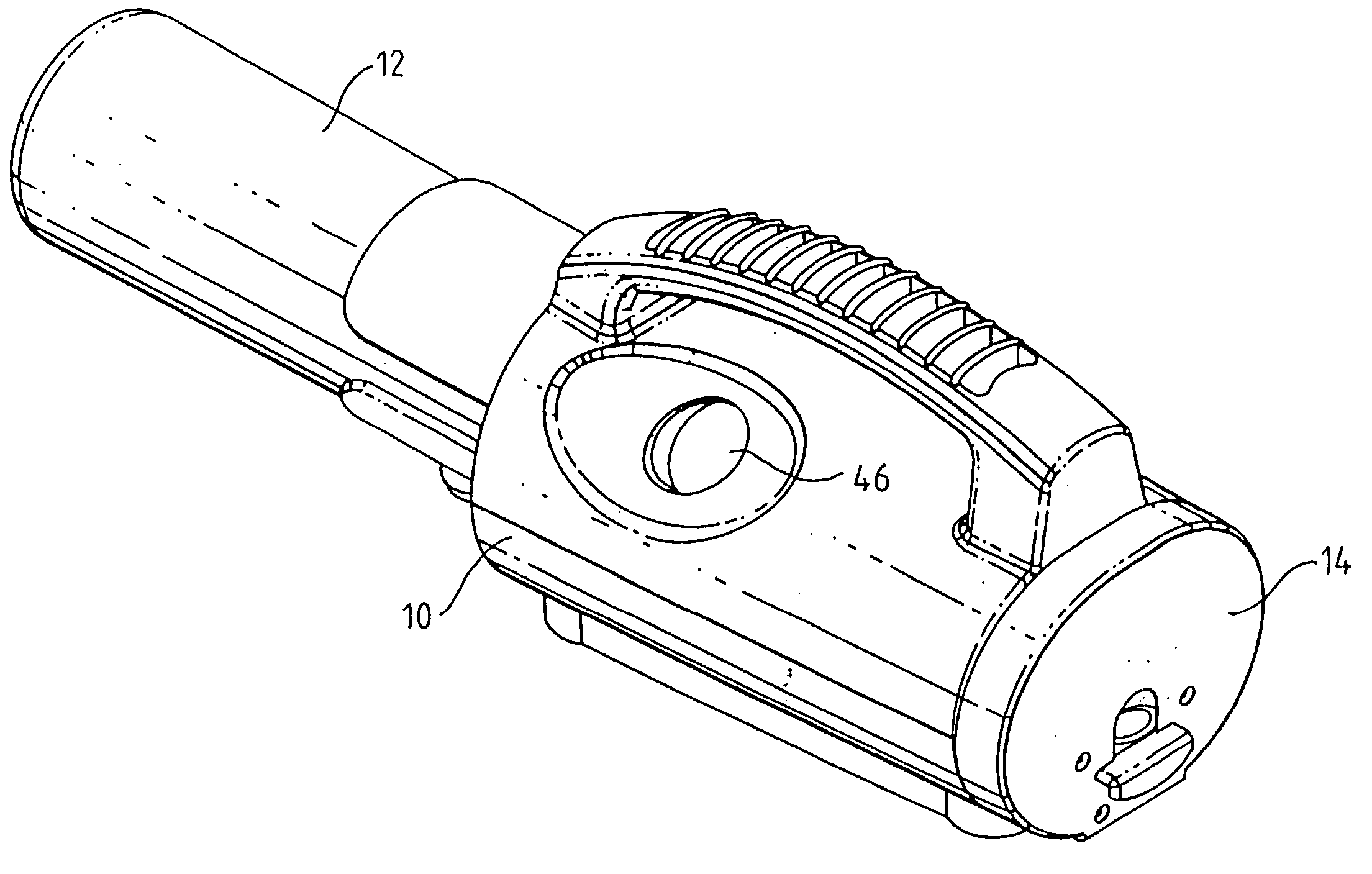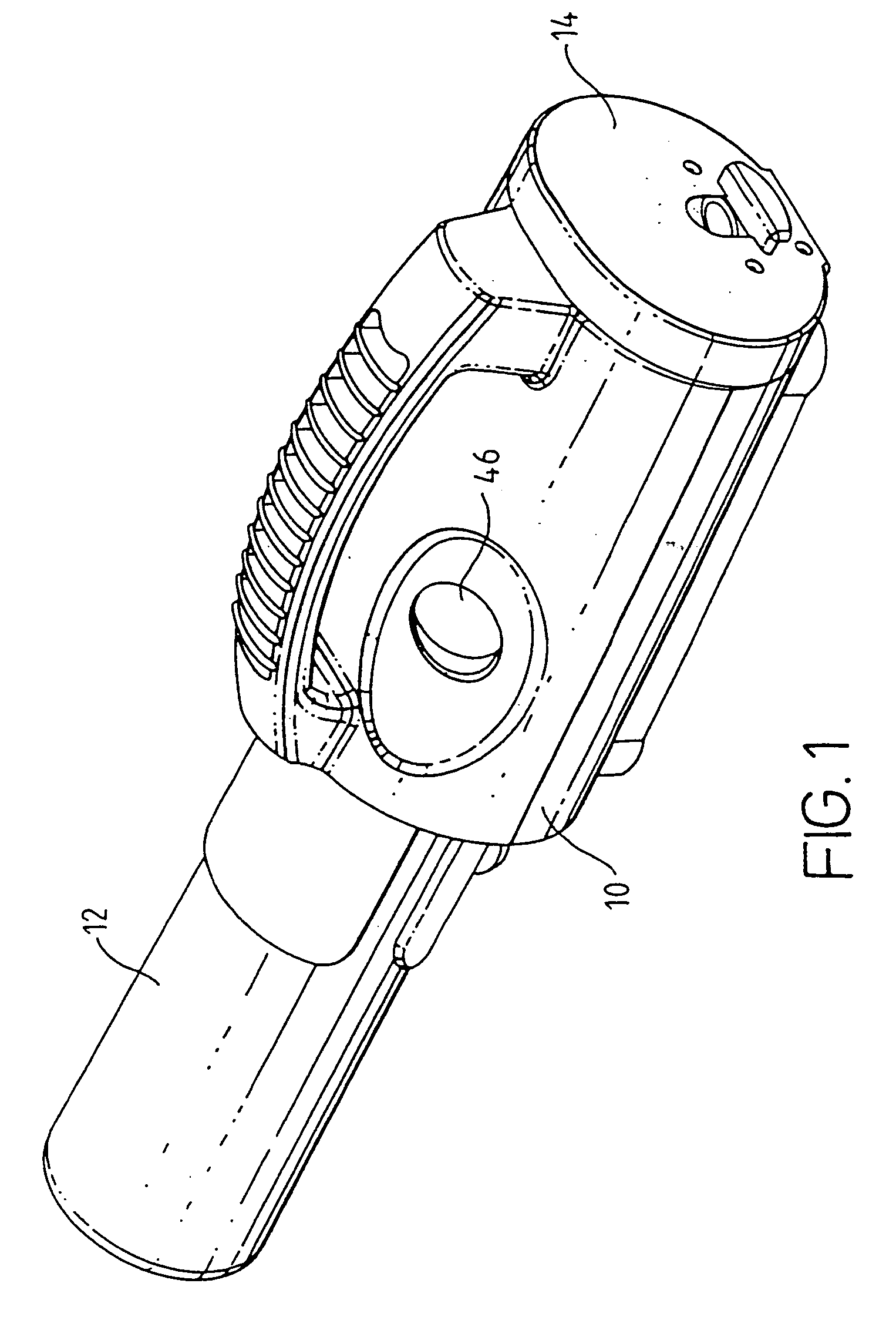Gas sensor calibration system
a calibration system and gas sensor technology, applied in the direction of liquid/fluent solid measurement, instruments, electrochemical variables of materials, etc., can solve the problems of hazardous gas required for calibration, frequent non-compliance, waste of calibration gas, etc., to reduce the volume of gas space, reduce the consumption of expensive calibration gas, and reduce the length of the gas path
- Summary
- Abstract
- Description
- Claims
- Application Information
AI Technical Summary
Benefits of technology
Problems solved by technology
Method used
Image
Examples
Embodiment Construction
[0041] Referring initially to FIGS. 1 to 3, the apparatus comprises a housing 10 containing a cylinder 12 of pressurised calibration gas that holds a mixture of that a detector is or may be sensitive to, for example oxygen, carbon monoxide, flammable gases and hydrogen sulphide, in an inert carrier, e.g. nitrogen. The gases are present in known predetermined concentrations. The housing includes an end panel 14 that can be slid out (see FIG. 2) while still being attached to the main housing 10 by means of an arm 16. As will be more fully described below, the arm 16 is spring loaded by spring 20 to urge the end panel 14 towards the main housing. However, it can be latched in place by means of a latching mechanism that can be released by operating a latch 18. Thus, when the end panel 14 is pulled out, it is held in the open position shown in FIG. 2. However, when the latch 18 is operated, the latching mechanism is released and the end panel is pulled by a spring 20 (see FIG. 4) towards...
PUM
 Login to View More
Login to View More Abstract
Description
Claims
Application Information
 Login to View More
Login to View More - R&D
- Intellectual Property
- Life Sciences
- Materials
- Tech Scout
- Unparalleled Data Quality
- Higher Quality Content
- 60% Fewer Hallucinations
Browse by: Latest US Patents, China's latest patents, Technical Efficacy Thesaurus, Application Domain, Technology Topic, Popular Technical Reports.
© 2025 PatSnap. All rights reserved.Legal|Privacy policy|Modern Slavery Act Transparency Statement|Sitemap|About US| Contact US: help@patsnap.com



